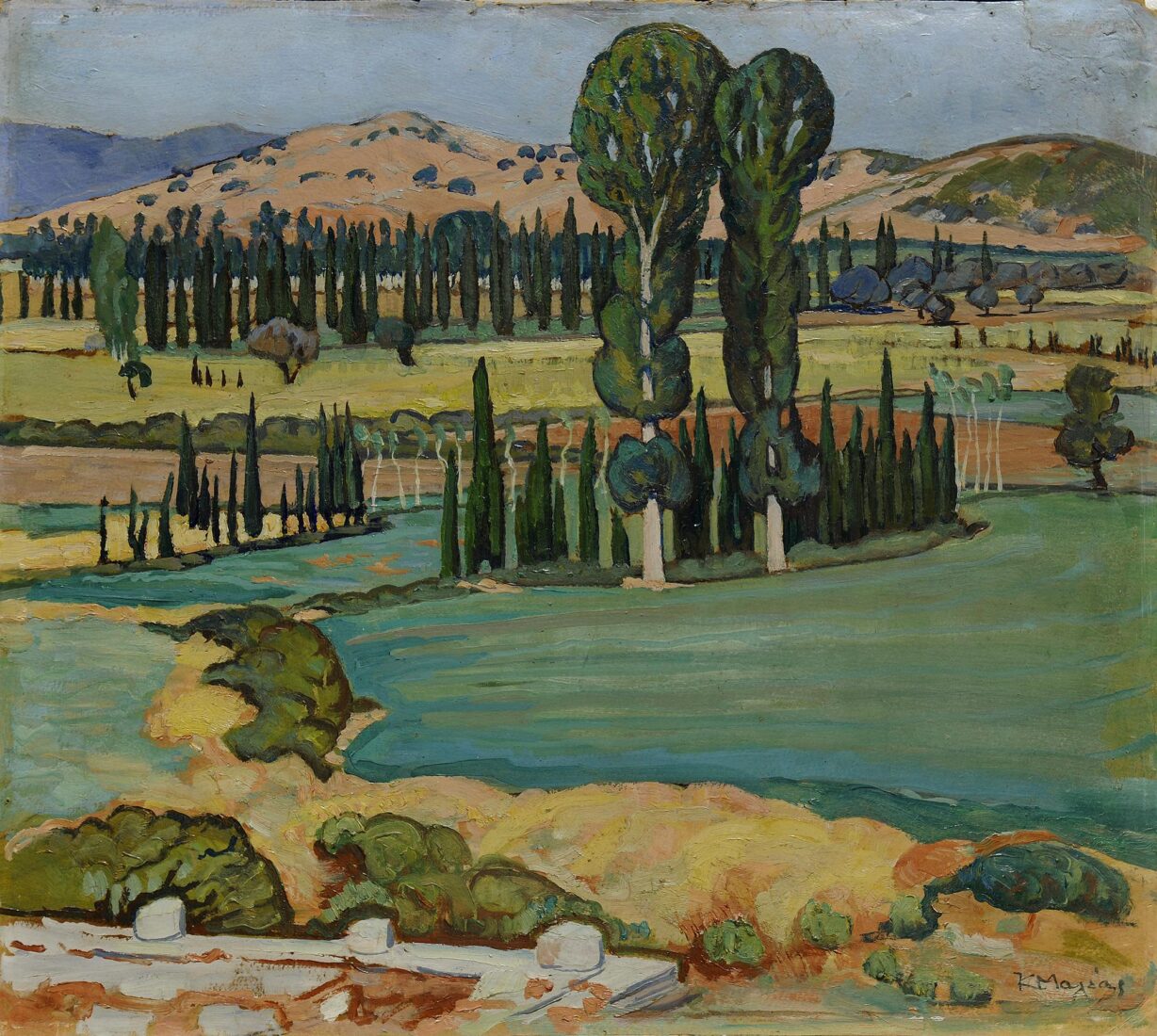We use cookies to make our site work properly, to personalize content and ads, to provide social media features and to analyze our traffic. We also share information about how you use our site with our social media, advertising and analytics partners. Read the Cookies Policy.

Maleas Konstantinos (1879 - 1928)
Thermos, Aitoloakarnania, ca 1921
Oil on pasteboard, 41,5 x 47 cm
The painting shows a serene plain of green fields and yellow hay stacks, reaching to the low hills in the background. Horizontal bands of tall poplar and cypress trees multiply the effect of the immense landscape. In the foreground, the painter has depicted the remains — the platform with the column bases — of the renowned archaic temple of Thermos. This foreground plane operates in a similar manner to the screens placed by set designers in the foreground of the theatrical stage. Maleas works with a denser, more pasted colour than Parthenis. Both of them, however, reject the effect of depth. How? By maintaining the intensity of colour even in the furthest planes. Thus, the image is kept within the canvas surface. Note the colours: In order to achieve the effect of a cool plain, the painter emphasises the green, conversing with the yellowy ochre and brown of the ploughed fields and the hills. Maleas loves curvilinear patterns, which he was taught by the Symbolists and Art Nouveau*, that is, the dominant style in Europe around 1900.

